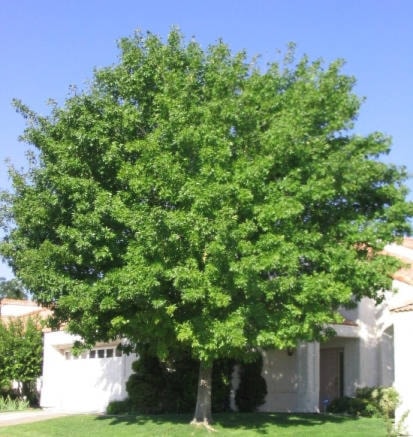Brian Minter
Special to The Progress
If you haven’t been re-energized by sitting under the cool shelter of a shade tree during our hot weather, it’s probably because you don’t have one! If you take a good look around our newer housing complexes, shade trees are very much a part of the landscape design. Considering the many fine attributes of these tall, stately trees, they are a welcome addition to our homes, especially now in our summer heat.
The most common misconception about shade trees is that they grow 100 feet overnight, drop tons of leaves to be raked up each year, and have root systems which demolish septic tanks and fields. Added to these alleged problems are concerns about insects, disease and pruning. For the most part, these are unfounded fears.
Shade trees can also be planted for reasons other than shade. When I select a tree for a landscape, I always look for two or three ways in which it can enhance the overall landscaping theme. Colour is one of the most important factors, whether it be foliage colour during the growing season or a spectacular fall performance. For summer colour, consider the disease-free ‘Prairie Fire’ flowering crab-apple, the many new tree forms of magnolias and the rich colour of the narrow ‘Red Obelisk’ or ‘Dawyck Gold’ beech. Fall colour specimens are too numerous to mention, but my favourite is the Acer rubrum family, which begin their red glow in late September.
Form is another important consideration. Tall, stark buildings or farm and commercial buildings too often spoil our vistas. Large pyramidal, round or columnar trees can soften and screen such structures and allow them to become more visually pleasing.
Let’s talk about the cooling effect of a shade tree. I’ve mentioned before that one average-sized shade tree has a cooling effect equivalent to four household air-conditioners running 12 hours a day. The net result is that your house could be 10-13°C cooler during our summer hot spells. Think about that one as you lay awake at night, tossing and turning in a 30°C room! Another big bonus is that the cooling effect of a shade tree doesn’t arrive in the form of a hydro bill at the end of each month.
If I haven’t convinced you yet that shade trees are a good investment, let me add the fact that they’ll keep your yard cleaner by collecting on their leaves the dust particles which would blow into your home, as well as sequestering carbon. In addition, they produce oxygen. They provide homes for birds, which in turn helps minimize your insect populations, and they act as a sound barrier to absorb a good deal of the noise from local traffic. Finally, they provide a nice retreat on a sweltering afternoon!
Now, if you’re still not convinced about huge shade trees, consider a slow-growing species or some of the new compact, columnar varieties. If it’s leaves you’re worried about, ‘Green Pillar’ oaks keep theirs all fall and winter. If insects are concerning you, gingkos, liquidambars and liriodendron are all free of pests. Many shade trees have very fibrous root systems which are quite safe in even tiny lots. When you weigh the pros and cons, I think it’s fairly evident that shade trees are a welcome addition, not only to our homes, but also to the environment. When is the best time to plant them? Ten years ago would have been great - the second best time is today!
